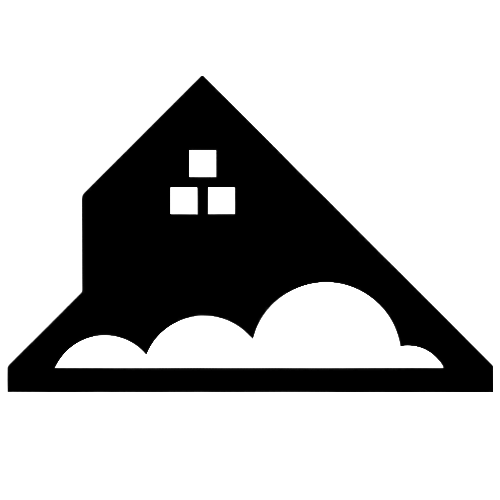
Photo by TheDigitalArtist on Pixabay
In today’s world, where personal and public safety is of utmost concern, the role of Closed-Circuit Television (CCTV) has become increasingly crucial. As an experienced writer, I’m excited to delve into the intricacies of CCTV and explore its significance in enhancing security and crime prevention through the use of advancedsecurity camera systems, includingoutdoor security camera systems,home CCTV systems, andhome surveillance systems.
Introduction to CCTV
CCTV, or Closed-Circuit Television, is a video surveillance system that usessecurity camerasto monitor and record activities within a specific area. Unlike traditional television, CCTV systems are designed to transmit signals to a limited set of monitors or recording devices, rather than being openly broadcasted. This closed-circuit nature ensures that the footage is accessible only to authorized personnel, making it a valuable tool for security and crime investigation. Some of thebest security camerasandoutdoor security camerasavailable today offer advanced features like4K resolution,facial recognition,mobile appintegration,infraredtechnology, andcloud storage.
Understanding the Meaning of CCTV
The term ‘Closed-Circuit Television’ is self-explanatory. ‘Closed-circuit’ refers to the fact that the video feed is transmitted through a dedicated, private network, rather than being accessible to the general public. This closed-circuit nature allows for enhanced security and control over the footage, ensuring that it is used solely for its intended purpose. Modernhome security cameras, often considered thebest home security cameraoptions, are part of comprehensivesecurity camera systemsthat offer advanced features and reliable performance.
Importance of CCTV for Security
CCTV systems play a vital role in enhancing security and providing a sense of safety in various settings, from residential neighborhoods to commercial establishments and public spaces. By continuously monitoring activities,security camerasact as a deterrent to potential criminals, as they are aware that their actions are being recorded. Additionally, the footage captured by CCTV can be invaluable in the event of a crime, providing crucial evidence that can aid law enforcement in their investigations. So, do cameras deter crime? Absolutely, assecurity camerasare a significant deterrent. When choosing thebest security camera system, it’s essential to consultsecurity camera reviewsand consider factors likenight vision,cloud storage, andperson detectioncapabilities.
The Role of CCTV Footage in Solving Crimes
CCTV footage has become an indispensable tool for law enforcement agencies in solving crimes. The recorded video can serve as a powerful piece of evidence, capturing the details of an incident, the identity of the perpetrators, and the sequence of events. This information can be instrumental in apprehending suspects, building a strong case, and ultimately securing convictions. Many crimes solved bysurveillance camerashighlight the importance of video footage in modern policing. Advanced features likenight vision,person detection, and high-qualityvideo qualityenhance the effectiveness of CCTV in crime-solving.
Real-life Examples: The Kid and His Mom CCTV Video
One striking example of the power of CCTV footage in solving crimes is the case of the ‘kid and his mom’ video. In this incident, a CCTV camera captured a young boy assaulting his mother in a public setting. The footage, which went viral, was instrumental in identifying the perpetrator and bringing him to justice, demonstrating the crucial role CCTV can play in exposing and addressing acts of violence and abuse. This case highlights the importance ofpublic security camerasandprofessional surveillance systemsin ensuring public safety.
CCTV Camera Installation: A Step-by-Step Guide
Installing a CCTV system can be a daunting task, but with the right guidance, it can be a straightforward process. Here’s a step-by-step guide to help you navigate the installation process:
- Assess your security needs: Determine the areas that require surveillance and the specific requirements of your CCTV system, such as the number ofsecurity cameras, resolution, and storage capacity. Effective camera monitoring and well-planned camera systems are essential for comprehensive security.
- Choose the right CCTV equipment: Select high-qualitysecurity cameras, digital video recorders (DVRs), and other necessary components that meet your security needs and budget. Consider options likeIP cameras,NVRsystems, andWi-Fi connectivityfor enhanced functionality and flexibility.
- Plan the camera placement: Strategically position yoursecurity cameras, includingoutdoor camerasandindoor cameras, to ensure optimal coverage and visibility, taking into account factors like lighting, obstructions, and the camera’s field of view.
- Install the CCTV system: Follow the manufacturer’s instructions carefully to properly install and configure thesecurity cameras, DVR, and any other components. For a seamless experience, consider aCCTV camera with installationservice or opt forDIY installationif you have the necessary skills.
- Test and monitor the system: Regularly test the CCTV system to ensure it is functioning correctly and make any necessary adjustments to improve its performance. Utilize features likemotion detection,night vision, andcloud storageto enhance the system’s effectiveness.
Enhancing Security with CCTV: Tips and Best Practices
To maximize the effectiveness of your CCTV system, consider the following tips and best practices:
- Regularly maintain and update your CCTV system: Keep yoursecurity cameras, DVR, and other components in good working condition by performing regular maintenance and firmware updates.
- Ensure proper lighting and visibility: Adequate lighting is crucial forsecurity camerasto capture clear and identifiable footage, especially in low-light conditions. When considering which of the following CCTV types would you use in areas with little or no light, think about lighting improvements to enhance visibility and invest in cameras with advancednight visioncapabilities.
- Implement robust data storage and management: Invest in a reliable storage solution, such ascloud storageorlocal storage, to ensure that your CCTV footage is securely stored and easily accessible when needed.
- Train personnel on CCTV usage: Educate your staff on the proper operation and monitoring of the CCTV system to ensure they can effectively utilize the footage for security and investigative purposes.
The Impact of CCTV on Crime Prevention
The presence ofsecurity camerashas been shown to have a significant impact on crime prevention. Studies have demonstrated that the mere existence of CCTV systems can deter potential criminals, as they are aware that their actions are being monitored and recorded. This deterrent effect, known as the CCTV effect, can lead to a reduction in the overall crime rate, making CCTV a valuable crime prevention tool in creating safer communities.
Debunking Common Misconceptions about CCTV
Despite the numerous benefits of CCTV, there are still some common misconceptions that need to be addressed:
- CCTV systems are designed to monitor public spaces and common areas, not to invade individual privacy. Proper signage and adherence to data protection laws ensure that CCTV is used ethically and legally, addressing privacy concerns and mitigating the negative effects ofsurveillance cameras.
- While the initial investment in a CCTV system may be significant, the long-term benefits and cost-effectiveness of enhanced security often outweigh the initial expenses. Additionally, with advancements in technology, CCTV systems have become more affordable and user-friendly, offering features likewireless cameras,HD resolution,weatherproofdesigns, andwide-angle lenses.
- On the contrary, CCTV footage is widely accepted as valid evidence in court proceedings, provided it is properly captured, stored, and handled according to legal protocols. Advanced features likefacial recognition,person detection, and high-qualityvideo qualityfurther enhance the evidentiary value of CCTV footage.
Conclusion: Harnessing the Power of CCTV for a Safer Future
As we delve deeper into the world of CCTV, it becomes evident that this technology is a powerful tool in the fight against crime and the pursuit of a safer society. By understanding the meaning, importance, and real-life applications of CCTV, we can harness its potential to deter criminal activity, aid in investigations, and ultimately create a more secure environment for all, contributing to significant crime reduction. With the advancements insecurity cameratechnology, such as the integration ofvideo doorbells,floodlight cameras,professional monitoring,smart home integration, andtwo-way audio, the future of CCTV looks promising in enhancing public safety and personal security.

















